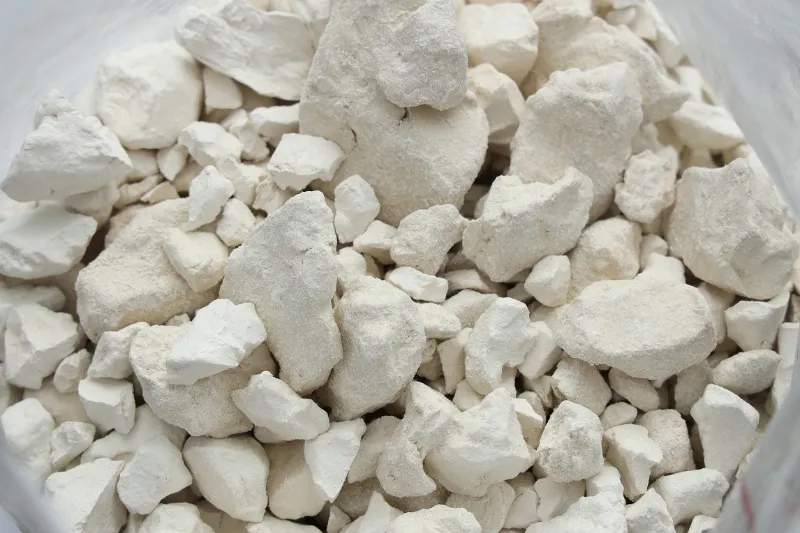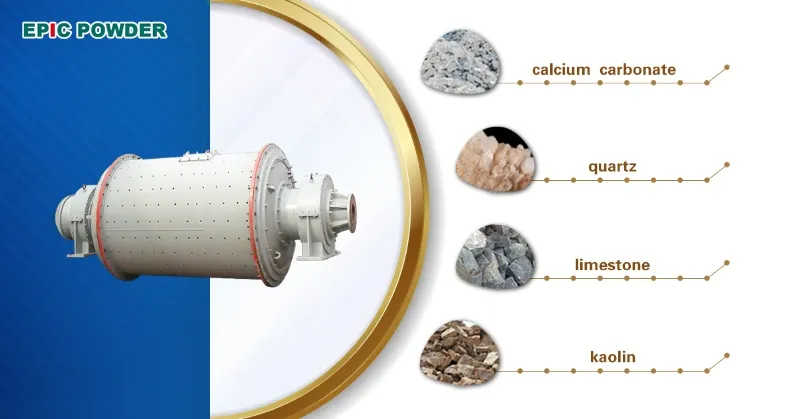Kaolinite deep processing refers to a series of treatments aimed at improving the quality, performance, and added value of kaolin to meet the specific requirements of different industries.
The main kaolinite deep processing technologies are as follows:
Purification and Whitening Technologies
- Physical Purification: This method uses differences in physical properties such as particle size, density, magnetism, and surface adsorption. These differences help separate non-clay minerals. Common techniques include hand picking, water selection, flotation, and magnetic separation.
- Chemical Purification and Bleaching: This removes iron-containing minerals in kaolinite. Methods include acid leaching, chlorination, alkali treatment, reduction, oxidation, and combined oxidation-reduction processes.
- High-Temperature Calcination: This is the best method for de-carbonization and whitening. It is essential for kaolinite from coal-bearing strata. It is typically calcined at 650-1050°C to change the mineral phase and eliminate impurities. This enhances whiteness and insulation properties. Chlorination and oxidation roasting are also used to remove iron and titanium elements from kaolinite.

Ultrafine Processing Technologies
- Mechanical Grinding: This method uses the layered structure of kaolinite. External force breaks the interlayer forces to achieve ultra-fine sizes. However, it requires high energy consumption.
- Dry Grinding: Used for hard kaolinite rocks.
- Wet Grinding: Typically used for soft kaolinite to remove sand and impurities, especially for coating-grade kaolin products.
- Combined Dry-Wet Grinding: A mix of both methods.
- Nanotechnology: Applied for ultra-fine grinding of kaolin.
- Classification: Uses Stokes’ law to separate ultrafine kaolinite in liquids. This method is costly and has low yield.
- Intercalation and Delamination: Expands kaolinite’s interlayer structure. This weakens the interlayer bonding. The mineral naturally exfoliates into smaller platelets.
- Chemical Synthesis: Uses rock minerals or aluminum silicate gels as raw materials. Hydrothermal methods are employed to synthesize ultrafine kaolinite with high purity and excellent properties.
Kaolinite Calcination Process

Process Flow Classification
- Grind First, Then Calcine: The raw ore is dry-ground, followed by wet ultrafine grinding, drying, scattering, then calcination. The product has higher whiteness. It requires more equipment and additional fine grinding after calcination.
- Calcine First, Then Grind: The raw ore is crushed and ground, then calcined, followed by wet ultrafine grinding and drying. This method is simpler, but it results in 1-3% lower whiteness compared to the first method.
Calcination Temperature Classification
- Low-Temperature Calcination (500-700°C): Removes hydroxyl groups. It is ideal for use as fillers in cable plastics and rubber seals.
- Medium-Temperature Calcination (925-1000°C): Can replace TiO₂ as a filler for paper.
- High-Temperature Calcination (1300-1525°C): Suitable for refractory products, optical glass crucible linings, and similar applications.
Modification Technologies
- Acid-Base Modification: Targets calcined kaolinite. The chemical environment during phase changes of Al and Si allows them to react with acids or bases. This changes kaolinite’s acidity, pore size, and surface area.
- Surface Modification: Uses physical, chemical, or mechanical methods to treat kaolinite’s surface. This enhances whiteness, brightness, chemical reactivity, and compatibility with polymers.
- Intercalation Modification: Involves inserting organic molecules into the interlayer structure of kaolinite without destroying its layered arrangement.
Epic Powder
Epic Powder, with its advanced grinding and surface modification equipment, provides tailored solutions for the deep processing of kaolinite. From ultrafine grinding using air classifiers mill and ball mills to surface modification techniques, Epic Powder’s systems enhance the quality and performance of kaolinite products. These systems ensure they meet the specific needs of industries like ceramics, coatings, and plastics. Whether it’s for improving whiteness, particle size, or enhancing surface characteristics, Epic Powder’s expertise in grinding equipment plays a crucial role in the production of high-quality kaolinite derivatives.
